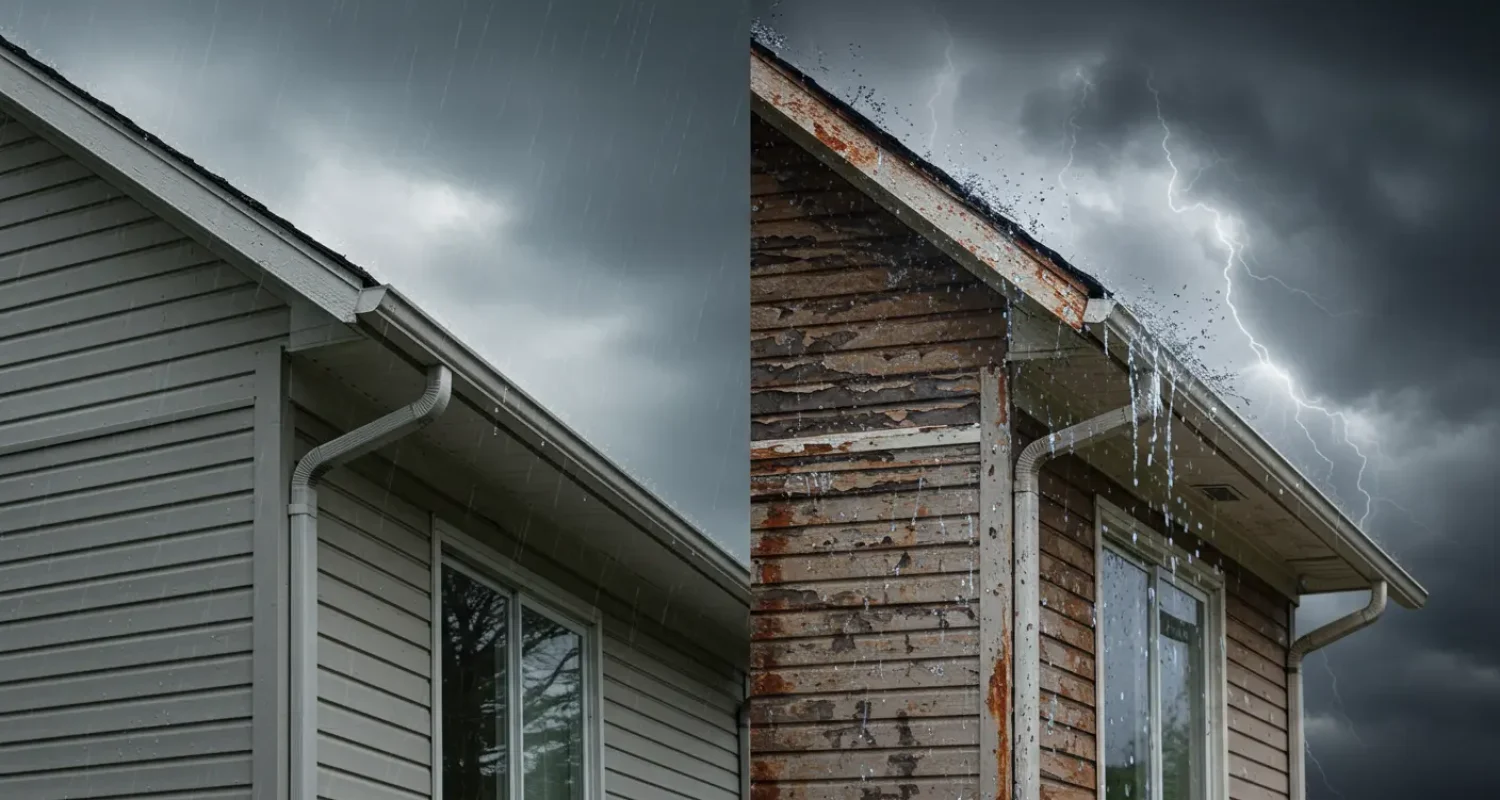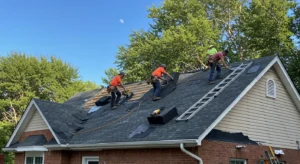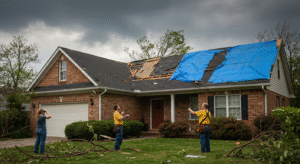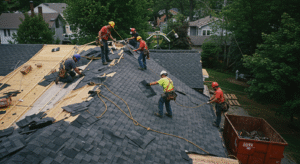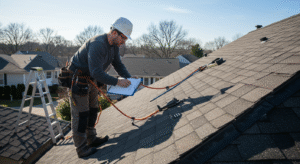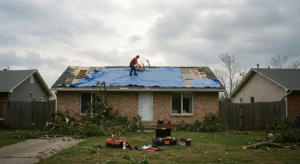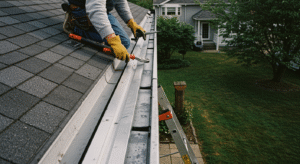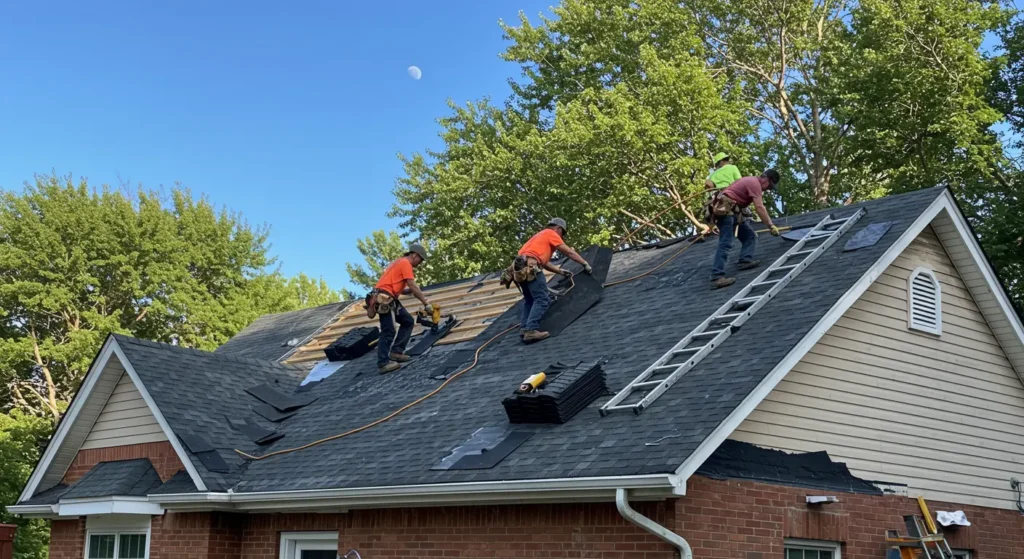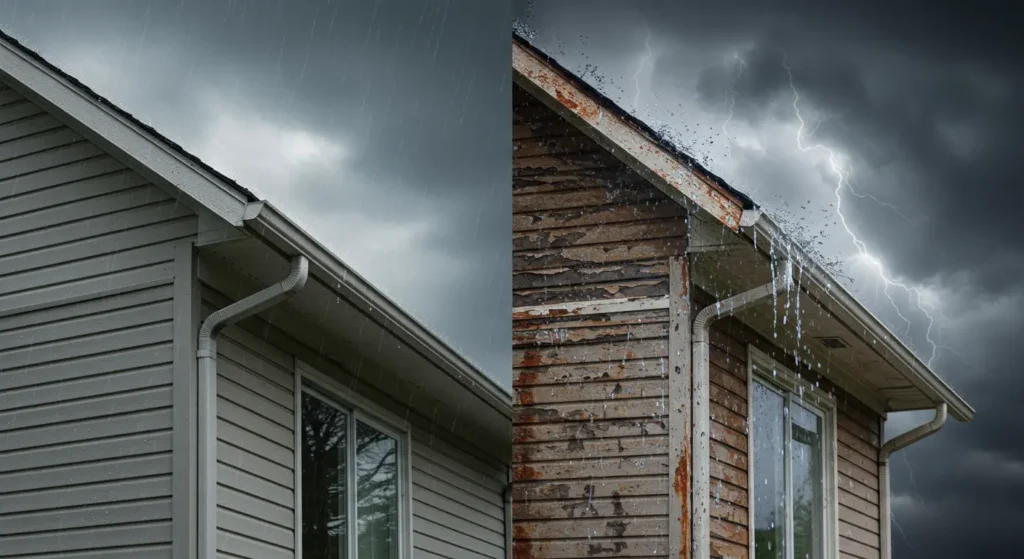Gutters are one of the most overlooked but essential components of your home’s defence system. They protect your roof, walls, foundation, and landscaping from water damage. However, like any other part of your home, gutters don’t last forever. Knowing the right signs of gutter replacement can save you thousands of dollars in repair costs, especially before storm season arrives.
Ignoring clogged gutters, gutter leaks, or sagging gutters can lead to severe water damage that impacts the safety and value of your property. If you’re wondering whether it’s time to repair or replace your gutters, this guide will help you make a proactive decision.
Why Gutters Matter: More Than Just Water Redirection
Before diving into the warning signs, it’s essential to understand why your gutters are so crucial. Gutters collect rainwater from your roof and channel it away from your home’s foundation. Without properly functioning gutters:
- Water pools around your home’s base, risking foundation cracks
- Moisture infiltrates your walls, leading to mould and mildew.
- Your roof and fascia can rot over time.
- Landscaping can erode or flood.
- Pest infestations may occur due to standing water.
In short, damaged or inefficient gutters compromise the structural integrity of your home.
Let’s explore the five most important signs it’s time for a gutter replacement.
Frequent Gutter Clogs That Won’t Go Away
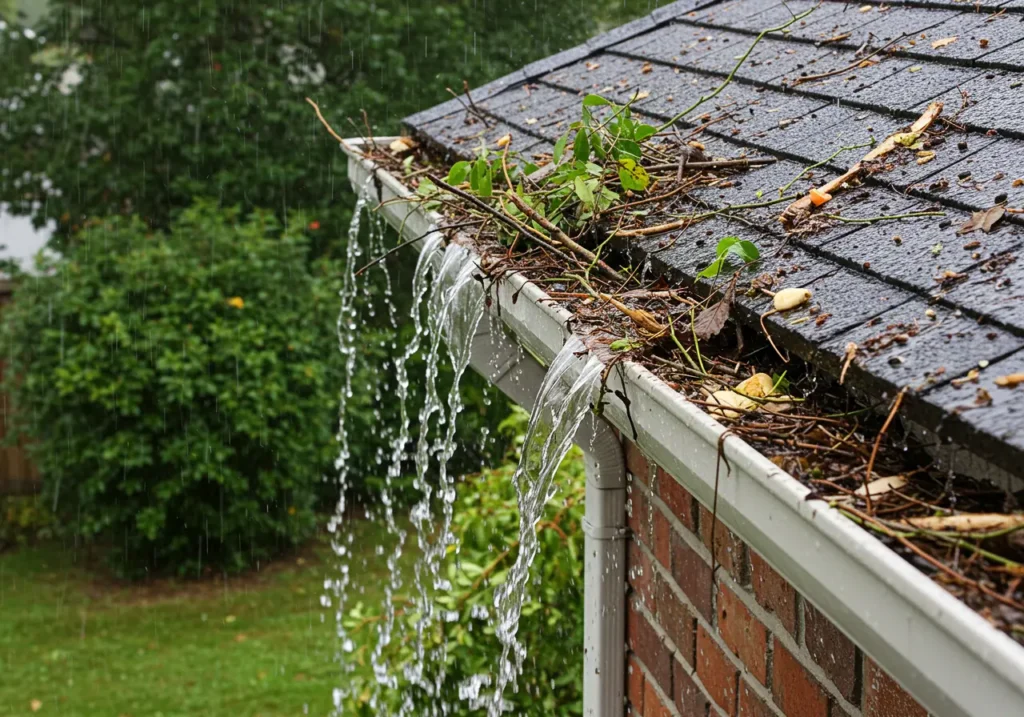
How to Spot It:
You notice water spilling over the sides of your gutters during even light rain. After every rainfall, you’re pulling out leaves, shingle grit, and debris.
While clogged gutters are standard during the fall or in heavily wooded areas, frequent clogs—even after cleaning—can signal deeper issues. Older gutters may be too narrow for your roof’s size, or internal rust may cause debris to accumulate more quickly.
Why It’s a Red Flag:
Chronic clogs force water to back up under your roof shingles or overflow next to your foundation. This accelerates structural decay and invites mold growth.
Solution:
If your gutters clog despite regular maintenance, consider a full replacement with seamless gutters or ones with built-in gutter guards.
Leaking Gutters and Visible Rust
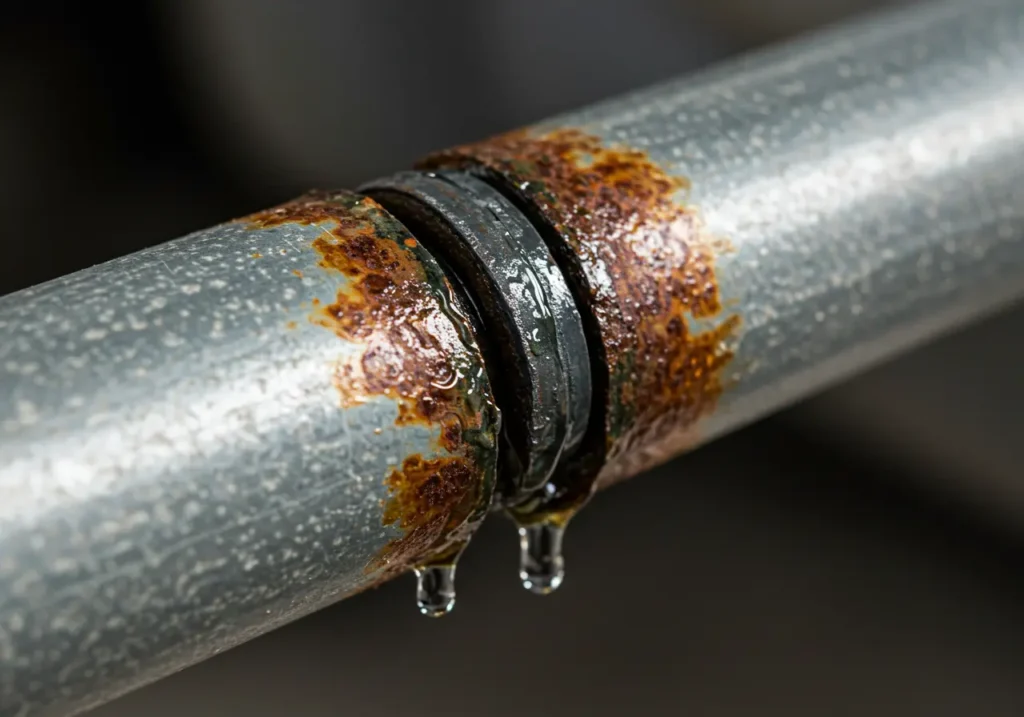
How to Spot It:
You see rust-colored streaks on your siding, water dripping from gutter seams, or puddles forming under your gutter lines even when it’s not raining.
Gutter leaks occur due to corrosion, joint separation, or cracks caused by weathering. Galvanised steel gutters, in particular, can rust over time if they are not properly coated or maintained.
Why It’s a Red Flag:
Water leaks defeat the entire purpose of having a gutter system. Persistent leaks lead to rotting soffits, fascia damage, and water seeping into your walls or basement.
Solution:
If sealing the leaks or caulking joints hasn’t worked, it’s time to replace your gutters—preferably with rust-resistant materials like aluminium or copper.
Sagging or Pulling Away from the Roofline
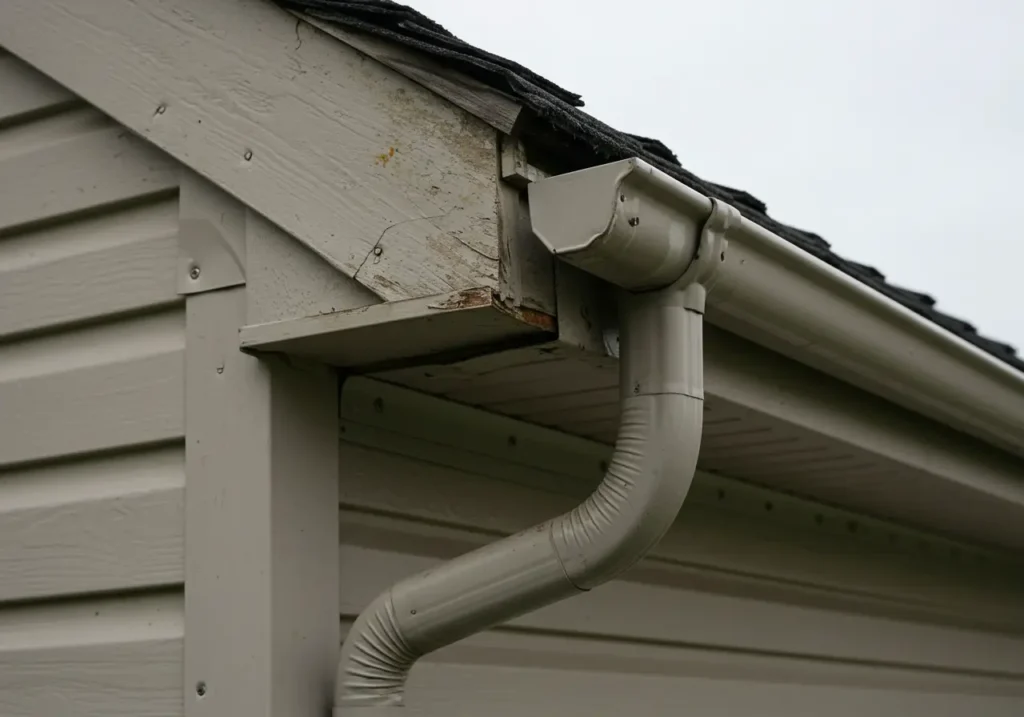
How to Spot It:
Your gutters appear uneven or are visibly pulling away from the fascia board. They may even sag in the middle when full of water.
Sagging gutters often indicate that the hangers (brackets that attach gutters to your home) are failing or that the gutters are warped and too heavy due to debris or water accumulation.
Why It’s a Red Flag:
When gutters become misaligned, water fails to flow correctly to the downspouts. This results in overflow, increased pressure on your home’s trim, and potential gutter collapse during storms.
Solution:
Please don’t wait until they fall off during the next rainstorm. Replacing sagging gutters with properly graded and installed systems ensures smooth water flow and a secure attachment.
Peeling Paint and Water Stains on Exterior Walls
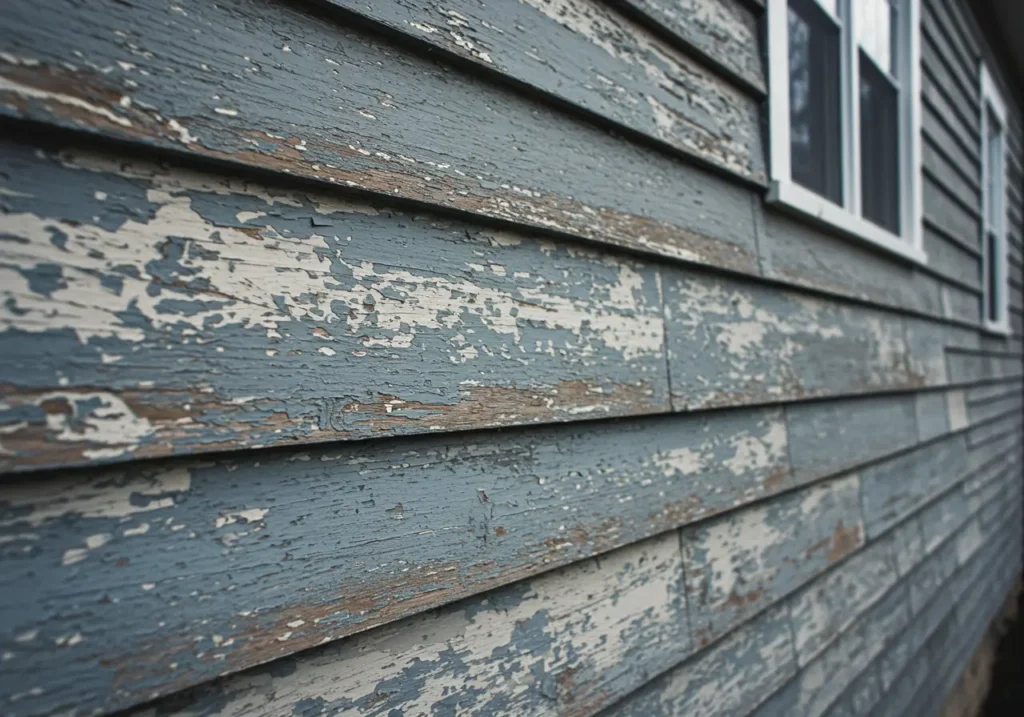
How to Spot It:
You notice peeling paint, bubbling surfaces, or dark streaks along your siding directly beneath the gutters.
These are subtle yet strong signs of gutter replacement. Overflowing or leaking gutters cause water to trickle down the sides of your home, damaging paint and encouraging mould growth.
Why It’s a Red Flag:
Cosmetic damage often hides a deeper problem—water may be penetrating wall insulation or weakening the structural frame of your home.
Solution:
If you’ve ruled out roof leaks or poor siding, it’s likely your gutters are to blame. New, high-capacity gutters can prevent staining and preserve your home’s exterior.
Crack in Foundation and Landscape Erosion

How to Spot It:
You see foundation cracks, pooling water around the base of your home, or signs of soil erosion in garden beds.
These symptoms suggest your gutter system is no longer directing water far enough away from your home.
Why It’s a Red Flag:
Water pooling near your foundation increases hydrostatic pressure, which leads to cracks and basement flooding. It can also damage your landscaping and kill plants.
Solution:
Upgrading your gutters with proper downspout extensions and splash blocks can protect your foundation. If your current gutters are too short or leaking, replacement is the best course of action.
When to Replace vs. Repair
Sometimes, repairs might seem like a cost-effective option, but not always. Here’s a quick guide:
Condition
One minor leak
Multiple leaks or rust
One loose hanger
Sagging gutters
Slight paint damage
Stained walls or foundation issues
Repair/Replace
Repair
replace
Repair
Replace
Repair
Replace
If your gutters are over 20 years old, replacing them is typically more economical than continued patchwork repairs.
The Best Time to Replace Gutters?
Before the Storm Hits.Storm season brings heavy rains, strong winds, and debris, putting weak gutters to the test. Don’t wait for catastrophic failure to occur.
Here’s why acting now matters:
- Prevent emergency repairs during peak storm times.
- Prevent costly home repairs caused by water damage.
- Enhance your home’s value and curb appeal with new, clean gutter systems.
- Peace of mind knowing your home is protected.
Choosing the Right Replacement Gutters
When replacing your gutters, consider the following:
- Material: Aluminium (lightweight and rustproof), copper (long-lasting and stylish), or vinyl (affordable but less durable)
- Style: K-style (standard and good flow) vs. half-round (classic aesthetic)
- Gutter guards: To reduce clogging and maintenance
- Professional installation: Ensures proper slope, alignment, and downspout placement
A licensed contractor can evaluate your current system and recommend the best upgrade based on your home’s architecture and local weather patterns.
Final Thoughts: Don’t Ignore the Warning Signs
Gutters aren’t glamorous, but they’re essential. Homeowners often learn the hard way that clogged, leaking, or sagging gutters can lead to devastating water damage if not addressed in time.
By recognising these five key signs of gutter replacement, you can take proactive steps to protect your most significant investment—your home. Whether it’s peeling paint, pooling water, or rusted seams, your home is sending a signal: it’s time to act.
If you’re noticing any of the signs discussed in this article, don’t wait for the next storm to cause damage. Contact a licensed gutter professional in your area for an inspection and a personalized gutter replacement plan.
Stay dry. Stay protected. Stay ahead.

